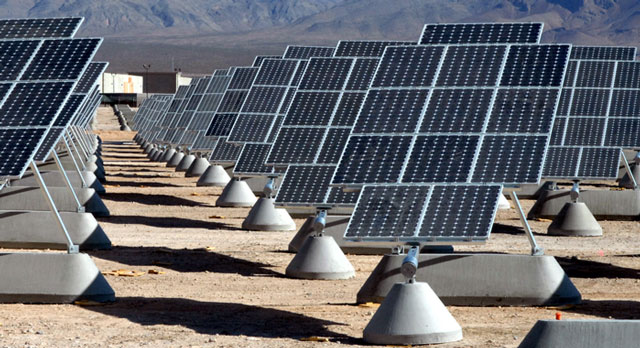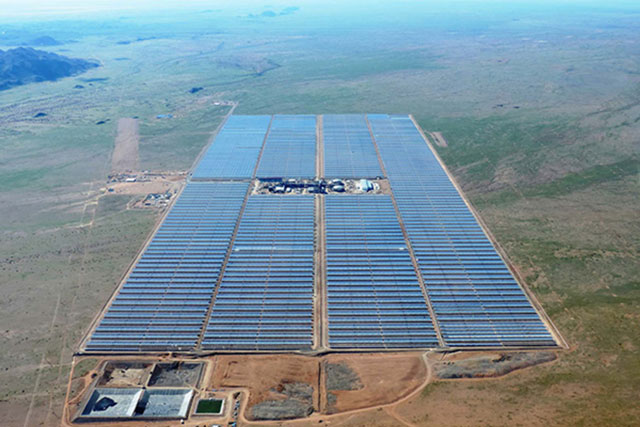
Until a few years ago, solar panels were a rare sight in South Africa, largely limited to the roofs of a few affluent households. This is changing rapidly, driven by three factors: the worldwide drive towards renewable energy, a highly strained local electricity supply, and a steady drop in solar panel prices.
Taking the lead from other countries, South Africa committed to an energy generation infrastructure development plan for 2010 to 2030, known as the Integrated Resource Plan.
Under the plan, the country aims to achieve 9,6GW of solar power capacity by 2030. When the plan was drawn up in 2010, solar was limited to a few isolated panels on domestic rooftops, and until recently contributed nothing to the national power grid operated by the state-owned utility Eskom.
But that is changing.
Solar plants are being developed, most by the private sector under a specially designed procurement programme. Eskom is also constructing some facilities.
In the past 10 years, the defining development in solar energy has been the sharp drop in the prices of photovoltaic panels. There have also been modest technological advances in other solar technologies and in power storage.
Photovoltaics, or PV, is a process in which energy from light is absorbed in materials and then directly transferred to electrons, resulting in an electric current.
Research advances over the years, especially those involving easily available silicon-based materials, have made this an increasingly cheap solar technology. It is also now the most popular.
The simplest PV configuration has immobile solar panels, slightly tilted relative to the ground and facing northwards towards the midday sun. An example is the Droogfontein plant near Kimberley in the Northern Cape. Panel rows are placed in a way to ensure that each panel does not shade the one behind it.
A more sophisticated design, found at the Sishen plant near Kathu, also in the Northern Cape, uses a single axis-tracking technology to counteract efficiency losses. Each row of panels rotates steadily along a north-south axis with the sun until it reaches a point where it starts to shade the row behind it.
In two-axis tracking systems, panels constantly face the sun squarely. The Herbert and Greefspan plants near Douglas in the Northern Cape use this technology. The cost of the additional tracking motors is compensated for by the capture of more sunlight.
Concentrated solar power
Concentrated solar power, or CSP, technologies are based on the redirecting of sunlight, normally by mirrors, to a common focal point, which as a result becomes extremely hot.
This heat is transferred by fluids to a nearby electricity generating unit, where water is boiled to drive a turbine. This is similar to the process in coal power stations where coal is burnt to generate heat.
CSP technologies include the solar tower, where a multitude of mirrors continually realign themselves to reflect sunlight to a hot spot on the tower. Khi Solar 1, under construction near Upington, is a representative of this class.

The parabolic trough technology requires long rows of concave mirrors focusing sunlight onto pipes running just above. The already operational KaXu near Pofadder uses this technology, and similar plants in Bokpoort and XiNa will be added soon. A related technology, linear Fresnel, appears in some of the proposals for future South African solar plants.
Finally, there is a hybrid technology, concentrated photovoltaics, where the collecting focal point contains a PV receiver rather than a heatable fluid. This design was used for the Touws River solar plant in the Western Cape.
Solar energy almost completely avoids emissions, uses a limitless energy resource and is becoming increasingly inexpensive. As such, it is promoted as a major clean contributor to solving the world’s energy crisis.
At the same time, it is important to recognise the shortcomings of solar power. Solar energy generation is only possible during daytime and in reasonably cloud-free conditions. In South Africa, that corresponds to typically eight hours per day on average.
For PV, the poorer the alignment between the sun and a solar panel, the worse the efficiency. Dust build-up on a panel further blocks sunlight, and photovoltaic panels don’t function properly if even only a fraction of the surface is shaded.
The quoted power produced by a panel or a solar plant is mostly obtained under near-optimal solar exposure. And the daily average power generated is much lower.
Energy storage also remains a challenge. Despite this, solar energy remains an attractive option.
All the completed solar power plants are part of South Africa’s electricity supply as they are fully linked to Eskom’s grid. Solar power already feeds more than 1GW onto the grid on a sunny day. This is a significant amount, and it makes it considerably less likely that the country will suffer power cuts in 2016.![]()
- Hartmut Winkler is professor of physics at the University of Johannesburg
- This article was originally published on The Conversation




